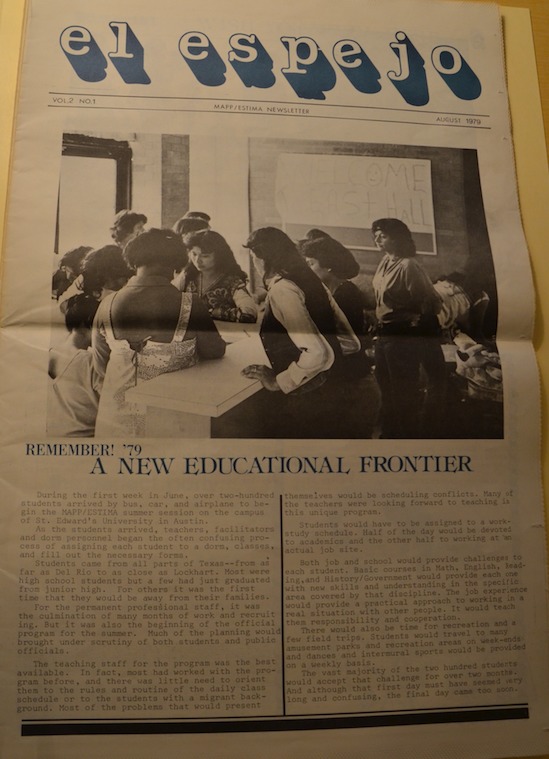New Educational Frontier
Academic Curriculum
In 1975 the Texas Department of Community Affairs, Governor’s Office of Migrant Affairs (GOMA), Texas Education Agency, and other programs that fell under the CETA Tittle III guidelines, began the Migrant Attrition Prevention Program and the Education Studies to Influence Migrant Advancement or otherwise known as MAPP/Estima. [6] In early June students from participating school districts across the state arrived at St. Edward’s University in Austin, TX, where they spent the next two months taking part in rigorous courses academic courses and fun extracurricular activities. The 1978 MAPP/Estima program had over two hundred students participating with 98% of them completing the course. This significant statistic shows that the program, even in its early stages was already attracting motivated students who recognized the importance it had for their future and for future generation migrant students. [7]
These students were busy from dawn to dusk with a full schedule of academics and work. The program's academic curriculum was designed to meet the specific needs that migrant students need. It had a focus on basic academics due to the fact that many migrant students fall behind entire years of material due to their constant moving and changes in environment. The academic curriculum included classes in reading and U.S government and history, with a focus on math and English. In 1979 the biggest challenge that the program's administrators faced was scheduling due to the large number of motivated students wanting to take advantage of everything about the program, and excited professors who could not wait to help these students in any way they could. [8] Some students were able to catch up on five levels worth of material over the summer and catch up to academic level of their non-migrant counterparts. [9] Most students would spend half the day in class and the other at an actual job site that St. Edward’s were able to set up for them. This not only taught them “responsibility and cooperation,” but also paid them well so that when they returned home with the money they saved, their families would be compensated for the loss of an extra set of hands on the field. Overall the school wanted to crate a well-rounded curriculum that would also provide for the “social and counseling needs” the students may have had during their time there. [10] In 1978 the directors stated in the MAPP/Estima annual newsletter, El Espejo, that they were proud of the “focus” that the program was able to give its participants.
Admission
According to the 1978 newsletter, there were simliar extensive lists of requirements and admission procceses for both the Migrant Attition Prevention Program (MAPP) and the Education Studies to Influence Migrant Advancement (Estima). The requirements were as follows, applicants had to meet CETA guidlines, be currently and officially enrolled in a Texas High School, be willing to accept the challenge and responsibility, and they had to be between the ages of 14-21. Other requirements included a minimum of 25 days of farm work and less than 150 consecutive days at any one place in the past 12 months. These requirements changed and adjusted throughout the years that the program continued in order to better serve the students and staff. The admission proccess for both required three letters of recommendation, a personal interview with the director of the program, a notarized letter of parental consent, and less then 100 recorded hours in a CETA-based program. The directors selected approximately two hundred students from around Texas to participate in that upcoming year's program. This extensive admission process made this an exclusive program for those students who showed great academic potential and motivation to explore different opportunites for their future.[11]

